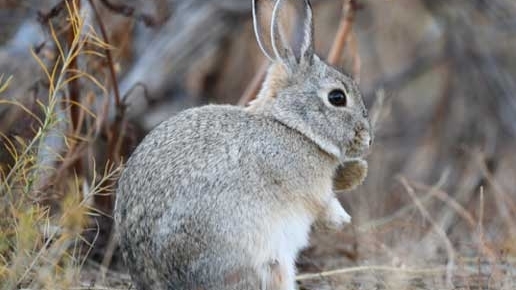NWDP: Rabbit Hemorrhagic Disease Virus Type 2 (RHDV2)

Rabbit hemorrhagic disease virus type 2 (RHDV2) is a viral disease fatal to both domestic and wild lagomorph species (rabbits and hares). It is not known to affect people or other animals.
It was first detected in wild rabbit populations in the United States in March 2020. Since then, the NWDP has worked closely with Veterinary Services and diagnostic labs to track all wild lagomorph samples submitted for testing, report test results to State wildlife agencies, and provide crucial data used in OIE reporting, disease mapping, and genetic sequencing.
Affected Species
RHDV2 is a highly contagious disease caused by a strain of the RHD virus. RHDV2 can be spread by contact with infected rabbits, their meat or fur, or materials that infected rabbits have come in contact with. Many times, the only signs of the disease are sudden death and blood-stained noses caused by internal bleeding. In the United States, the virus has spread to wild rabbit populations in at least 14 States since March 2020.
Wild lagomorph species affected in the United States include:
- Eastern cottontail
- Desert cottontail
- Mountain cottontail
- Black-tailed jackrabbit
- Antelope jackrabbit
- Brush rabbit
- Pygmy rabbit
- Riparian brush rabbit
NWDP Activities
NWDP works closely with collaborators and other Federal and State agencies to track and report the prevalence and spread of RHDV2 across the United States.
More Information
Contact Us
National Wildlife Disease Program
The National Wildlife Disease Program works with partners nationwide to conduct disease monitoring and surveillance in wild animals and is the primary emergency response contact point within APHIS Wildlife Services. Our program coordinator is available for questions about wildlife disease monitoring and surveillance, the status of disease outbreaks and emerging disease events, and wildlife emergency response activities in natural disasters (floods, hurricanes, wildfires) or oil spills.
Julianna Lenoch
National Wildlife Disease Program Coordinator
Email: julianna.b.lenoch@usda.gov
Phone: 970-266-6350

